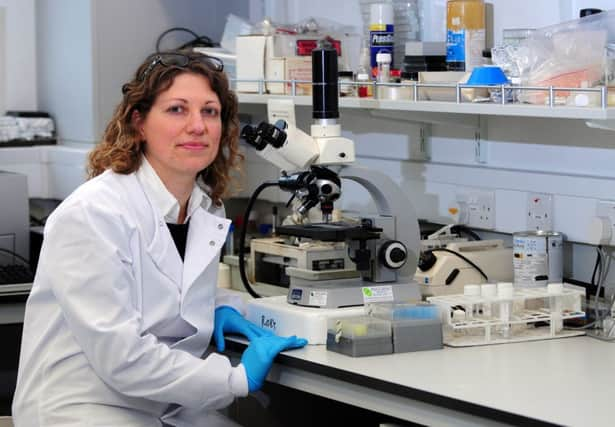Scots researchers look to develop typhoid cure


Fifty years after an outbreak of typhoid struck Aberdeen, scientists in the city are spearheading work to identify the molecules which could help kill off the disease.
They eventually hope this will lead to new drugs to treat typhoid, which still affects millions of people in developing countries with poor sanitation.
Advertisement
Hide AdAdvertisement
Hide AdOn 20th May 1964, the first cases of typhoid were discovered in Aberdeen in what was set to become the biggest outbreak of the infection in recent British history.
It led to more than 500 people being quarantined in hospital and fears across the country of many deaths. However, the outbreak passed without a single fatality.
An investigation traced the source back to a single large tin of Argentinean corned beef sliced and sold by a supermarket.
While cases of patients being diagnosed with typhoid are now rare in developed countries, it still claims the lives of over 200,000 people around the world each year.
Aberdeen University is now hoping its work could help reduce this deadly toll and lead to the development of new treatments.
The work is being led by Dr Stefania Spanò, who joined the university from Yale in the United States at the end of last year.
The research will focus on how the infections defences can be broken down, allowing drugs to destroy it before it can kill.
Dr Spanò said: “To many, it may seem that typhoid is almost a historical disease. But in developing countries where poor sanitation is a concern, it continues to kill hundreds of thousands of people each year, with 26 million new cases being diagnosed annually.
Advertisement
Hide AdAdvertisement
Hide Ad“Our work here in Aberdeen is seeking to identify what remains elusive – the molecules that have the ability to kill the pathogenic bacteria, Salmonella Typhi, which causes the infection.
“It is just one in over 2,000 types of Salmonella bacteria, but among the least understood.
“It is only in the last few years that biomedical research has begun to break ground in understanding the basis of this infection.”
Unlike most bacteria that are harmless and killed off by cells within the body called macrophages, pathogenic bacteria like Salmonella Typhi cause potentially deadly infections and can survive within these cells.
Dr Spanò added: “Typhoid is an infection that is unique to humans.
“We know that, unlike us, animals host macrophages within their bodies that have the ability to fight it.
“Our research is aiming to identify what is unique in the human biology that prohibits us from fending off Salmonella Typhi.”
Work already carried out by the researcher at Yale in the laboratory of Dr Jorge Galán has identified two molecules that are key to the process by which Salmonella Typhi is killed off in animals.
Advertisement
Hide AdAdvertisement
Hide AdDr Spanò said the movement of molecules was critical to many processes that happen within the body’s cells, including the removal or killing of bacteria.
“Two molecules that are part of the transport process that occurs when Salmonella Typhi is destroyed have already been identified,” she said.
“But crucially what we are now seeking to identify is what we would call the ‘killing factor’ - the molecule that essentially delivers the fatal blow in killing the Salmonella Typhi pathogen.
“If we can identify this it would provide enhanced understanding of the infection that could in the long-term lead to the development of new drugs for its treatment.”